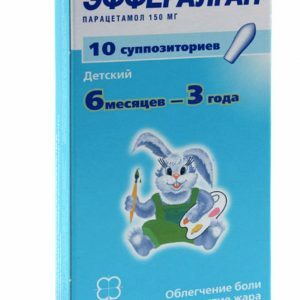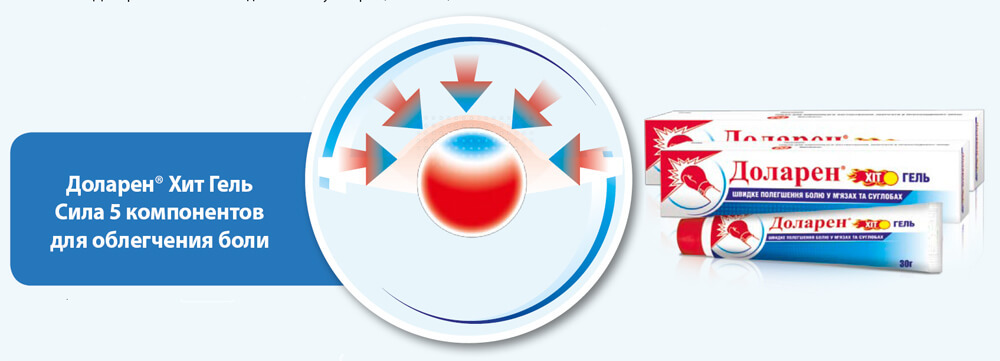Overview of nonsteroidal anti-inflammatory drugs for joints
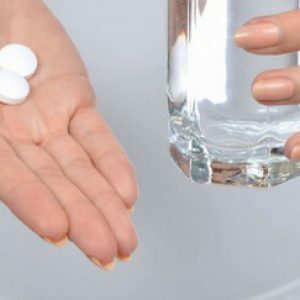 Non-steroidal anti-inflammatory drugs are a large group of pharmacological agents characterized by pronounced anti-inflammatory, analgesic and antipyretic effects.
Non-steroidal anti-inflammatory drugs are a large group of pharmacological agents characterized by pronounced anti-inflammatory, analgesic and antipyretic effects.
Note: non-steroidal anti-inflammatory drugs( agents) are indicated by the abbreviation of NSAIDs or NSAIDs.
Important: is a common analgesic and antipyretic agent such as Paracetamol , does not belong to the NSAID group, because it does not affect the inflammatory process, and is only used to relieve symptoms.
Table of contents: How do nonsteroidal anti-inflammatory drugs work?Classification of nonsteroidal anti-inflammatory drugs for joints Pharmacokinetics Contraindications Adverse effects of non-steroidal anti-inflammatory drugs Specificity of anti-inflammatory therapy Individual NSAIDs for the treatment of joint inflammationHow do non-steroidal anti-inflammatory drugs work?
The action of NSAIDs is aimed at inhibiting the production of the enzyme cyclooxygenase( COX), which in turn is responsible for the synthesis of biologically active substances - thromboxane, prostaglandins( PG) and prostacyclines, which function as mediators of inflammation.Reducing the level of production of PG contributes to reducing or completely reducing the inflammatory process.
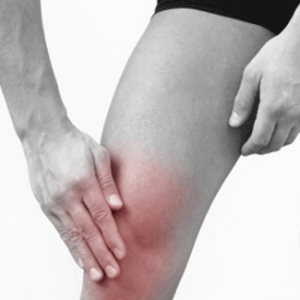 Different types of cyclooxygenase are present in a variety of organs and tissues.The enzyme COX-1 in particular is responsible for the normal blood supply to the mucous membrane of the digestive organs and maintaining a stable pH of the stomach by reducing the synthesis of hydrochloric acid.
Different types of cyclooxygenase are present in a variety of organs and tissues.The enzyme COX-1 in particular is responsible for the normal blood supply to the mucous membrane of the digestive organs and maintaining a stable pH of the stomach by reducing the synthesis of hydrochloric acid.
COG-2 is normally present in the tissues in small amounts, or is not detectable at all.The increase in its level is directly related to the development of inflammation.Drugs that selectively inhibit the activity of this enzyme act directly on the pathological focus.Due to this, there is no indirect negative effect on the digestive tract.
Note: COX-3 does not affect the dynamics of the inflammatory process, but is responsible for the development of pain and febrile reactions due to hyperthermia( rise in body temperature).
Classification of non-steroidal anti-inflammatory agents for joints
By selectivity, all NSAIDs are divided into:
- Non-selective, inhibiting all types of COX, but predominantly COX-1.
- Non-selective, affecting both COX-1 and COX-2.
- Selective inhibitors of COX-2.
The first group includes:
- Acetylsalicylic acid;
- Piroxicam;
- Indomethacin;
- Naproxen;
- Diclofenac;
- Ketoprofen.
The representative of the second category is Lornoxicam.
The third group is:
- Nimesulide;
- Rofecoxib;
- Meloksikam;
- Celecoxib;
- This is an ethanol.
Important: Acetylsalicylic acid and Ibuprofen mainly reduce body temperature, and Ketorolac( Ketorol) - reduces the intensity of pain syndrome.To reduce inflammation of the joints, they are ineffective, and can be used only for symptomatic therapy.
Pharmacokinetics
Systemic NSAIDs are absorbed very quickly when taken per os.They are characterized by very high bioavailability( it varies from 70 to 100%).The process of absorption is somewhat slowed down by increasing the pH of the stomach.The highest content in the blood serum is achieved after 1-2 hours after administration.
If drugs are injected intramuscularly, it is conjugated( coupled) to plasma proteins( binding level - up to 99%).Formed active complexes freely penetrate into the joint tissues and synovial fluid, mainly concentrating in the focus of inflammation.
Active substances NSAIDs and their metabolites are excreted by the kidneys.
Contraindications
It is highly undesirable for women to use systemic NSAIDs( enteral or parenteral forms) for the treatment of joints during pregnancy.Some drugs of this category can be prescribed by the attending physician if the intended benefit for the mother is higher than the possible risk to the fetus.
Contraindications also include:
- individual hypersensitivity to the drug;
- ulcers and erosion of the gastrointestinal tract;
- leukopenia;
- Thrombocytopenia;
- renal and / or hepatic insufficiency.
Side effects of non-steroidal anti-inflammatory drugs
 Drugs that inhibit COX-1 can provoke the development or exacerbation of gastrointestinal diseases - including hyperacid gastritis and ulcerative erosive lesions of the walls of the digestive tract.
Drugs that inhibit COX-1 can provoke the development or exacerbation of gastrointestinal diseases - including hyperacid gastritis and ulcerative erosive lesions of the walls of the digestive tract.
Often noted side effects are diarrheal disorders( nausea, heaviness "under the spoon," heartburn).
The regular use of NSAIDs or the excess of recommended dosages often causes a bleeding disorder caused by bleeding.With prolonged use, it is possible to reduce the number of blood cells, up to the development of such a serious disease as aplastic anemia.
Many NSAIDs have a nephrotoxic effect, leading to a decrease in the functional activity of the kidneys, and provoking an increase in blood pressure.With long-term use, they contribute to the development of nephropathies.Drugs can also have a negative effect on liver function.
There is also the possibility of developing bronchospasm on the background of taking non-steroidal anti-inflammatory drugs for the treatment of joints.
Skin allergic reactions, manifested by itching and rashes( "urticaria") are not excluded.With individual intolerance, Quincke's edema and anaphylaxis are not excluded.
Specificity of therapy with anti-inflammatory drugs
All funds of this group should be used only for the purpose of the doctor with subsequent control of the dynamics of the inflammatory process.The patient should immediately notify the attending physician of all negative changes in the condition.Therapy is carried out with minimally effective doses for the shortest possible time!
Drugs in the form of capsules or tablets should be taken after meals, washed down with a large amount of liquid( preferably - pure water).So you can reduce the damaging effect of drugs on the mucous membranes of the digestive tract.
With local use of anti-inflammatory gels and ointments, the likelihood of side effects is almost zero, since the active ingredients almost do not enter the systemic bloodstream.
Individual NSAIDs for the treatment of joint inflammation
When choosing a drug, the doctor takes into account the nature of the disease, the degree of severity of the pathological process, as well as the individual characteristics of the patient's body( including the presence of chronic diseases and age).
The most commonly used:
-
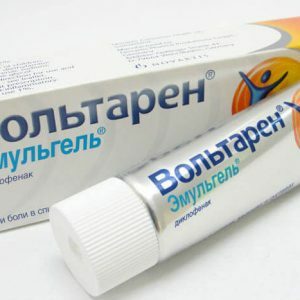 preparations based on indomethacin;
preparations based on indomethacin; - medicines of the diclofenac series;
- Aceclofenac and its analogs;
- Piroxicam and its derivatives;
- Meloksikam;
- Nemisil;
- Celecoxib, etc.
Indomethacin
This medicine is available in the form of capsules and tablets.Standard single doses - from 25 to 50 mg, and the frequency of reception - 2-3 times a day.On the background of taking Indomethacin, side effects characteristic of NSAIDs are particularly frequent, so preference is increasingly being given to other, safer means.
Diclofenac
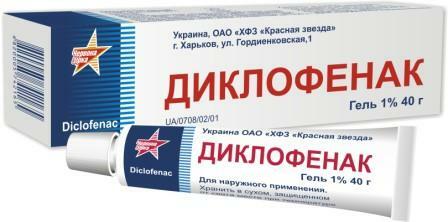
The analogues of this preparation are Voltaren, Naklofen and Diclac.Diclofenac is produced by pharmacological companies in the form of tablets and capsules, an injection solution, gels for application in the area of the diseased joint, and in the form of candles.Inside, he is prescribed in a dose of 50-75 mg 2-3 times a day, and the daily dose should not exceed 300 mg.The solution is injected in / m( in the buttock) to 3 ml with a time interval between not less than 12 hours.Injections are conducted in courses no more than 5-7 days.The gel should be applied in the projection of the affected joint 2-3 times a day.
This is ASAD78ASD
The analogue of the preparation is the Etol Fort.It is available in capsules of 400 mg.It is characterized by selectivity, preferentially inhibiting the activity of COX-2.The drug is prescribed for emergency care, as well as for the course therapy of rheumatoid arthritis, ankylosing spondylitis and osteoarthritis.Single dose - 1 capsule( 1-3 times a day after meals).If there is a need for a course, the attending physician adjusts the dosage every 2-3 weeks after assessing the dynamics of the process.Side effects are relatively rare.
Important: Etopolac can reduce the effectiveness of certain medications to lower blood pressure.
Aceclofenac
Analogues of the drug are Zerodol, Diclotol and Aertal.Aceclofenac is a good alternative to Diclofenac in terms of effectiveness.It is produced in tablets of 100 mg, and is used both for urgent relief of symptoms, and for course treatment.It is advisable to take tablets for 1 pc.2 times a day with meals.Against the background, there may be diarrhea, nausea, and pain in the abdominal region( symptoms are noted in almost 10% of patients), therefore it is advisable to treat joints with minimally effective doses and short courses.
Piroxicam
The drug is available in tablets of 10 mg and as a solution for injection;Analogue of Pyroxicam - Fedin-20.The active substance penetrates into the synovial fluid of the joints, acting directly in the focus of inflammation.Depending on the nosological form and activity of the process( the severity of the symptoms), dosages vary from 10 to 40 mg per day( taken at one time or divided into several receptions).The analgesic effect develops only 30 minutes after taking the tablets and remains on average day.
Tenoxicam
Tenoxicam( Texamen-L) is sold as a powder for the preparation of an injection solution for intravenous administration.The standard dosage is 2 ml, which corresponds to 20 mg of active substance( it is administered once a day).For gout during the period of exacerbation, course treatment is recommended for 5 days( up to 40 mg daily for the patient).
Lornoxicam
The drug is available in tablets( 4 and 8 mg), as well as in powder form( 8 mg) for dilution.Analogues - Lorakam, Xefokam and Larfix.The usual dosage of Lornoxicam is 8 to 16 mg 2-3 times daily before meals.Tablets should be washed down with a large volume of liquid.The solution is intended for administration in / in or / m 8 mg 1-2 times a day.The maximum allowable daily intake for the injection form is 16 mg.
Important: is especially careful when treating Loraxicam for patients suffering from stomach diseases.
Nimesulide
Nimesil, Remesulide and Nimegesic are among the most common analogues of this drug.This NSAID is in the form of granules for the preparation of a suspension, in tablets of 100 mg and a form of gel for topical external application.The recommended dose is 100 mg 2 times a day after meals.The gel is recommended to be applied to the skin in the projection of the affected joint with light rubbing movements 2-4 times a day.
Important: patients with renal or hepatic impairment are given smaller doses.The drug has a hepatotoxic effect.
Meloksikam
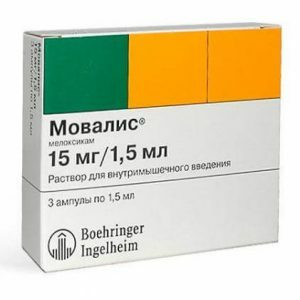 Other trade names Meloxicam - Meloks, Rekoksa, Movalis and Revmoxicam.This means for the treatment of joint inflammation is in the form of tablets of 7.5 or 15 mg, and also in the form of a solution in ampoules of 2 ml( corresponding to 15 mg of the active ingredient) and suppositories for rectal administration.
Other trade names Meloxicam - Meloks, Rekoksa, Movalis and Revmoxicam.This means for the treatment of joint inflammation is in the form of tablets of 7.5 or 15 mg, and also in the form of a solution in ampoules of 2 ml( corresponding to 15 mg of the active ingredient) and suppositories for rectal administration.
The drug selectively inhibits COX-2;He extremely rarely has a negative effect on the stomach and does not lead to nephropathy.At the very beginning of the course treatment, Meloxicam is prescribed for intravenous administration( 1-2 ml each), and as the activity of the inflammatory process decreases, the patient is prescribed tablets.The single dose of this NSAID is 7.5 mg, and the frequency of administration is 1-2 times per day.
Rofecoxib
Rofecoxib( another trade name - Denebol) is sold in pharmacies in the form of a solution for injection( ampoules of 2 ml contain 25 mg of active substance) and in tablets.The degree of adverse effects of this NSAID on the kidney and GIT in this medication is extremely low.The standard therapeutic dose is 12.5-25 mg.Multiplicity of admission( or in / m administration) - 1 time per day.With intensive joint pain at the beginning of the course, the patient is prescribed 50 mg of rofecoxib.
Celecoxib
This selective COX-2 inhibitor is formulated in capsules containing 100 or 200 mg of active substance.Analogues of Celecoxib are Flogoxib, Revmoxib, Celebrex and Zicel.NSAIDs very rarely provoke the development or exacerbation of gastroenterological pathologies, if the prescribed treatment regimen is strictly observed.The recommended daily dose is 100-200 mg( at one time or in 2 divided doses), and the maximum dose is 400 mg.
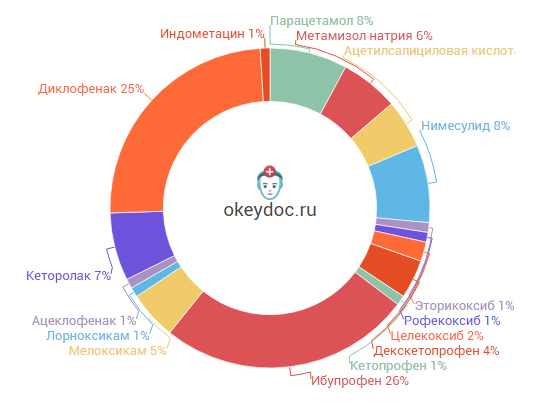
Do not take NSAID tablets at the same time and do injections to avoid overdose.But it is quite possible and even recommended in parallel with the medicinal forms for systemic treatment to use gels and ointments!
Vladimir Plisov, medical reviewer

